
A celebrity launching a new label is not news at all. So when I noticed a new label’s half-page advertisement in The Times of India yesterday featuring Ekta Kapoor, my only thought, at first, was that the ad had a very-Asian Paints vibe. That and the brand name itself – a nice play on her name that could also mean One in Hindi.
And then I noticed the call-to-action!
Shop at: The brand website + a social media handle (Roposo)!

Usually, ads mention the social handles at the bottom – the list includes Twitter, Instagram and Facebook handle, and the intended call-to-action for that addition is ‘follow us’ (meaning: be our fan; keep track of what we communicate about ourselves while you spend time on social media). While those handles are completely missing from this ad, the Roposo handle is mentioned right alongside the brand URL with a very different call-to-action usually accorded to social media handles – ‘shop at’.
I checked the website first, and that led me to the other social media platforms that the label is present in – Facebook and Instagram. The label has more than 9K followers on Instagram despite starting only on November 9, 2021. And how many followers on Roposo? 300+.
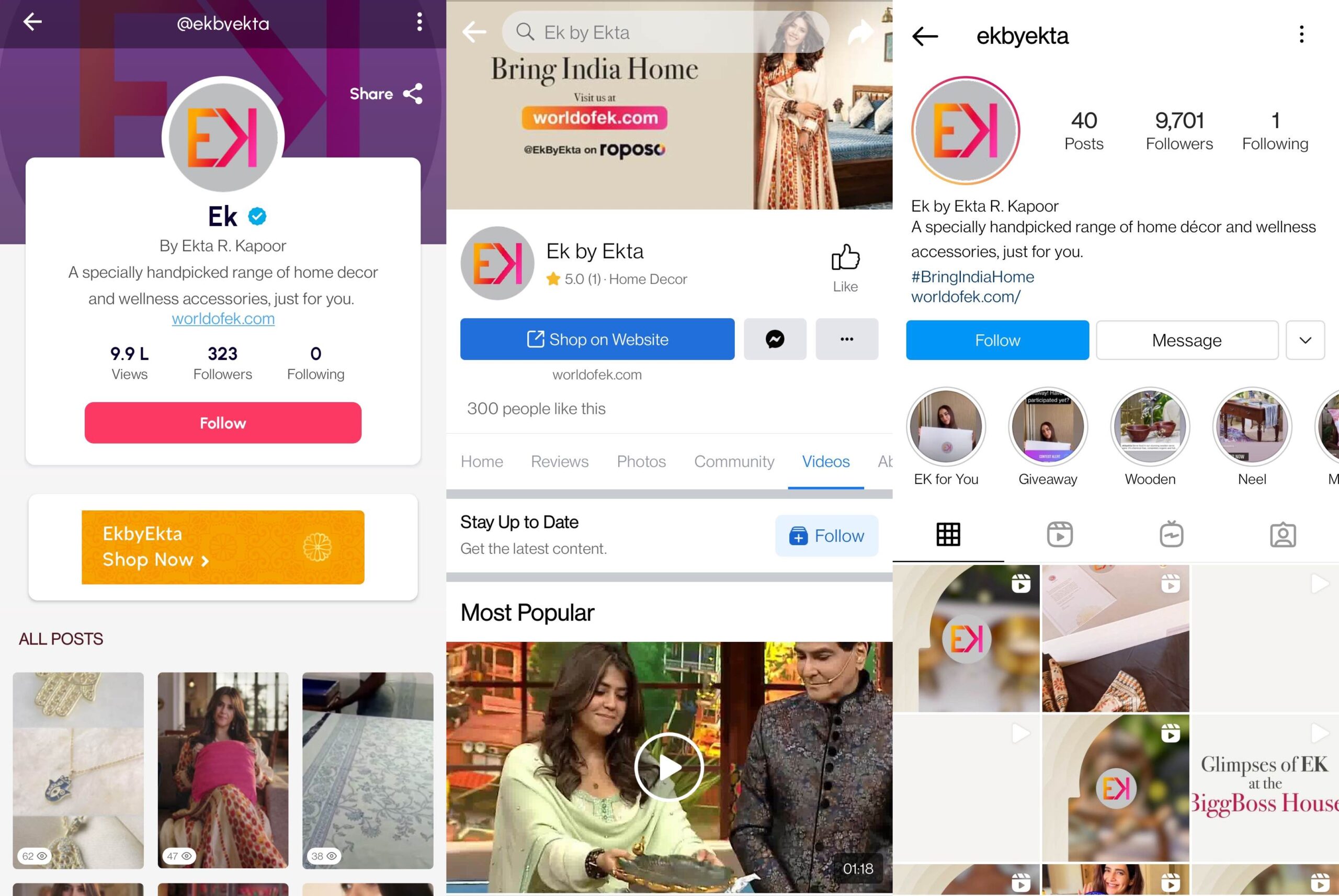
So why add the Roposo handle so specifically in a print ad?
You get the answer when you install Roposo on your phone and see the EkByEkta handle. If you look past the only 300+ followers, you notice a ‘Shop Now’ button too!
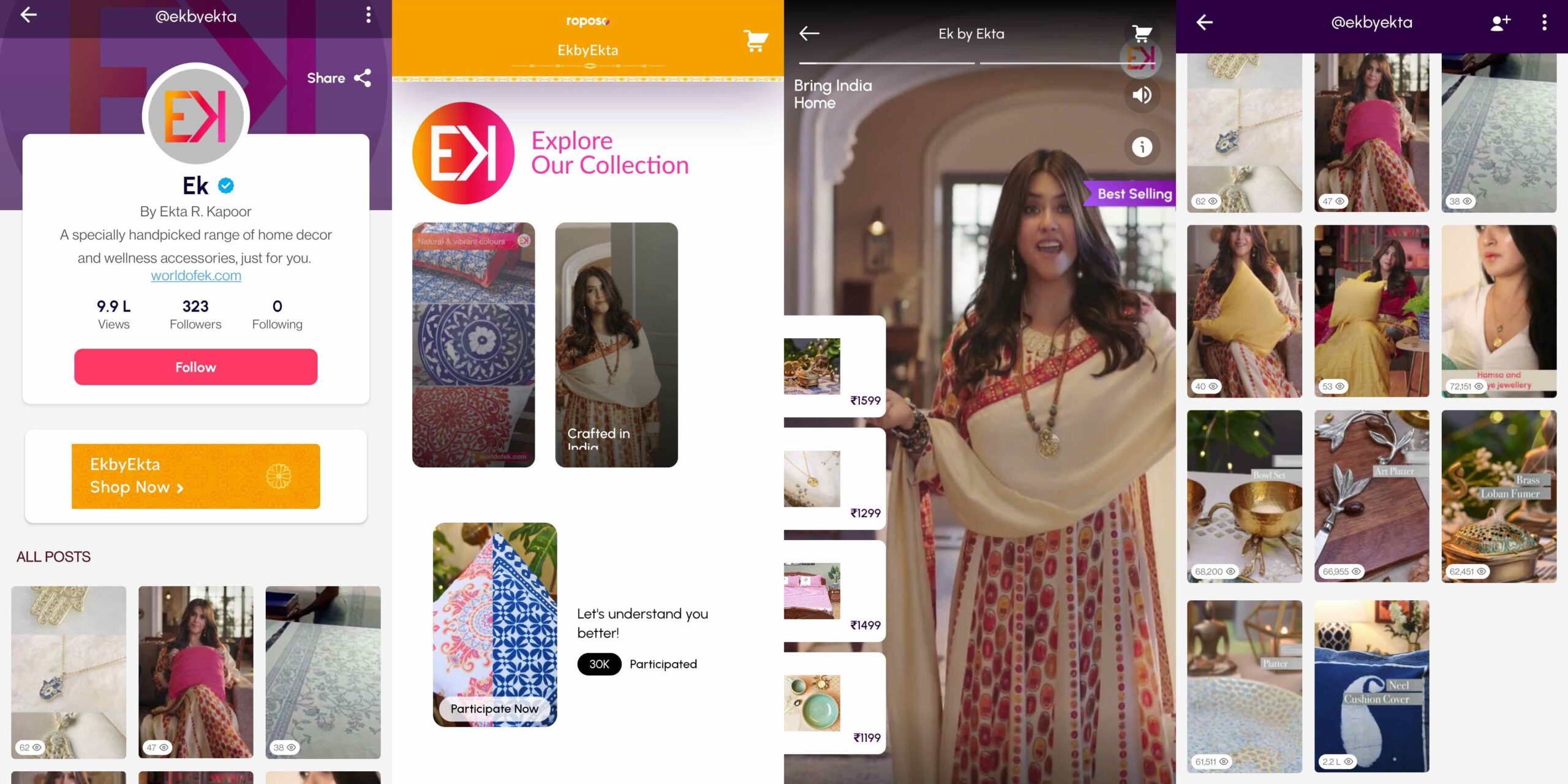
Go through that button and you realize that you can actually buy the products via Roposo too, besides the official website. The user flow is the same as the official website – look at the products (virtual gallery), add products to the cart, pay for them online and get them delivered.
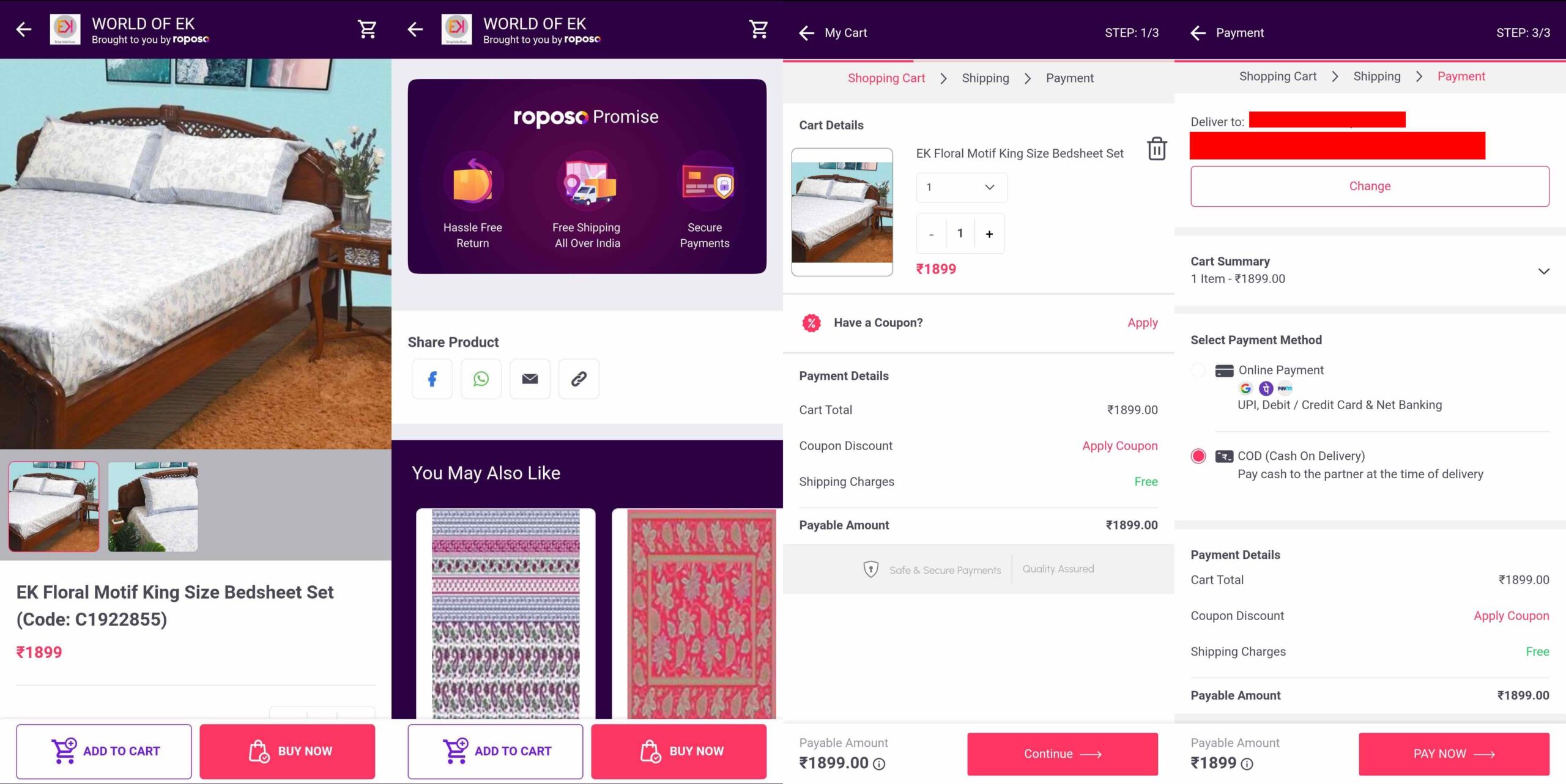
So what value does Roposo add to the brand over and above the official website which is also the web store?
This is where the promise of social commerce comes in. Social commerce was supposed to be e-commerce via social media platforms. Facebook and Instagram have tried this in so many ways over the years. I keep stumbling on promoted posts on Instagram from time to time, but when I click on the ‘Show now’ button, it takes me to the brand’s website where I need to complete my purchase. In that case, the social media platform merely delivers on one part of the experience—browsing the products—while the fulfillment is done by the brand’s website.
Roposo seems to be wanting to do both parts by itself – browse, and buy.
But the promise of social commerce was not merely to replicate official brand websites where people could not just browse but also buy.
The promise of social commerce was built on the premise that people do not naturally spend time on brand websites, but they do spend time/reside on social media timelines on platforms like Twitter, Instagram, or Facebook scrolling endlessly looking at other people’s shares while also stumbling occasionally on branded/sponsored posts. Social commerce’s promise was audience attention that is naturally and organically drawn.
We can safely assume by now that people do spend inordinate amounts of time on the more popular social media platforms like Instagram or Twitter. Is that true for a TikTok-clone by Roposo that was acquired by InMobi’s Glance lock-screen content app in November 2019? Not really, despite Roposo (and InMobi) claiming numbers like 100 million+ in terms of users. Sure, that’s a lot of users, no doubt, it’s probably too early to claim that people reside on Roposo like people reside on Instagram. A simple, anecdotal proof is the kind of followers Ek By Ekta gathers on Instagram versus Roposo. That ratio is perhaps illustrative of the kind of pull both platforms have earned so far.
More importantly, when a platform has to sign up with an influencer officially and join the print advertising of one of the many brands it has tied up with to increase the possibility of people coming to them, that says a lot about the relative impact or popularity of the platform.
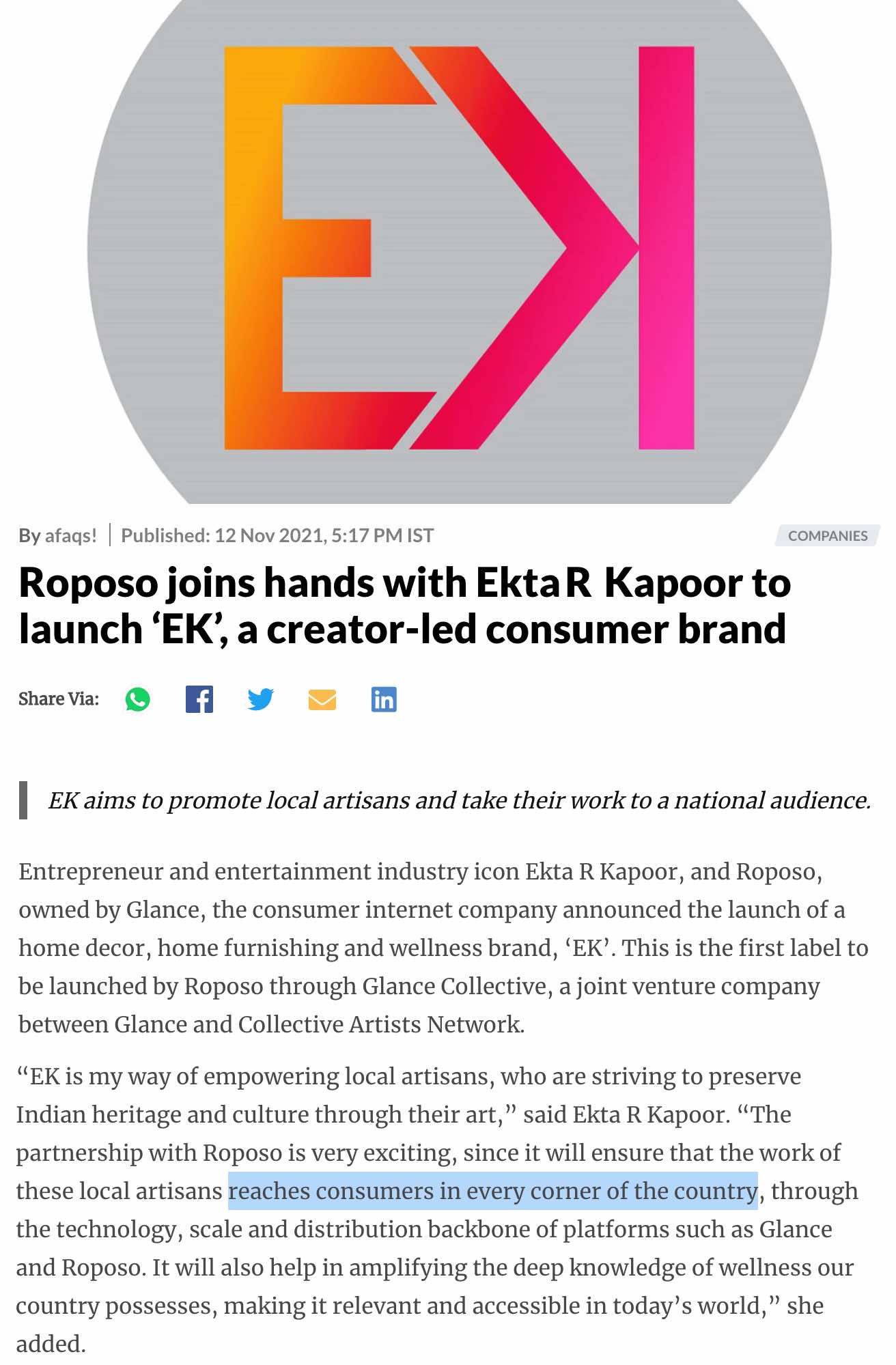
Sure, a social media platform advertising on another medium to drive users is not unheard of – most social media platforms may have used that tactic earlier in their life cycle. But a social media platform’s true spread happens because of people telling one another, in large numbers, because they like staying on those platforms and communicating with each other, and broadcasting their views. Given how new Roposo is, that is probably asking for too much at this point – it may happen eventually.
Also, TikTok pays a lot of influencers too, to promote the platform. But that activity is in-platform marketing. It doesn’t spill into using the reach of another media channel (like print or TV) to drive users. We get curious about TikTok because someone we appreciate is active on the platform, not because that person releases a TV ad saying she is active on TikTok.
However, there is another benefit of social commerce that is less spoken about. When people spend time on social media platforms, they are logged in, with their details visible to the platforms. But when they visit an online brand store, unless they log in and let themselves be seen by the brand, they are merely leaving cookies on the website – this is not similar to how they leave their footprint on the same brand’s page on a social media platform.
For example, when people browse products on Ek By Ekta on the brand website, they could do so even without ever creating a login ID and logging in. But when they visit the same brand’s store and page on Roposo, chances are they are logged into Roposo with their own accounts/profiles. To be fair, I do not have a Roposo account and I was able to browse the products without a login, and by merely installing the app. That’s generally not the default behavior on most established social media platforms that are already popular and people are always logged in via mobile apps. But this logged-in browsing helps the brand considerably more than the unlogged behavior on the brand website – the brand could track what content is being watched more often, and showcase that as a trigger to consider/buy. This works in the form of peer influence – we gravitate more towards products with more reviews, and may similarly move towards products that are visibly more viewed on Roposo. But given Roposo’s limited reach or influence, this is a moot point for now.
In essence, it is definitely interesting to see Roposo pitch itself higher than a mere TikTok-clone by incorporating full shopping features. And given its relative newness, it is understandable that the platform is trying inorganic/paid methods to push itself to users’ consciousness via shopping instead of mere content.
But that very act—of pushing itself—is an antithesis of how and why social media platforms gain massive traction, primarily through interesting and engaging content.
In this case, Roposo is mirroring the activities of the brand’s website and is not perhaps adding enough value either to the brand or to the users (for instance, the brand website offers a 10% discount on the first order, something I did not see while trying to order via Roposo).
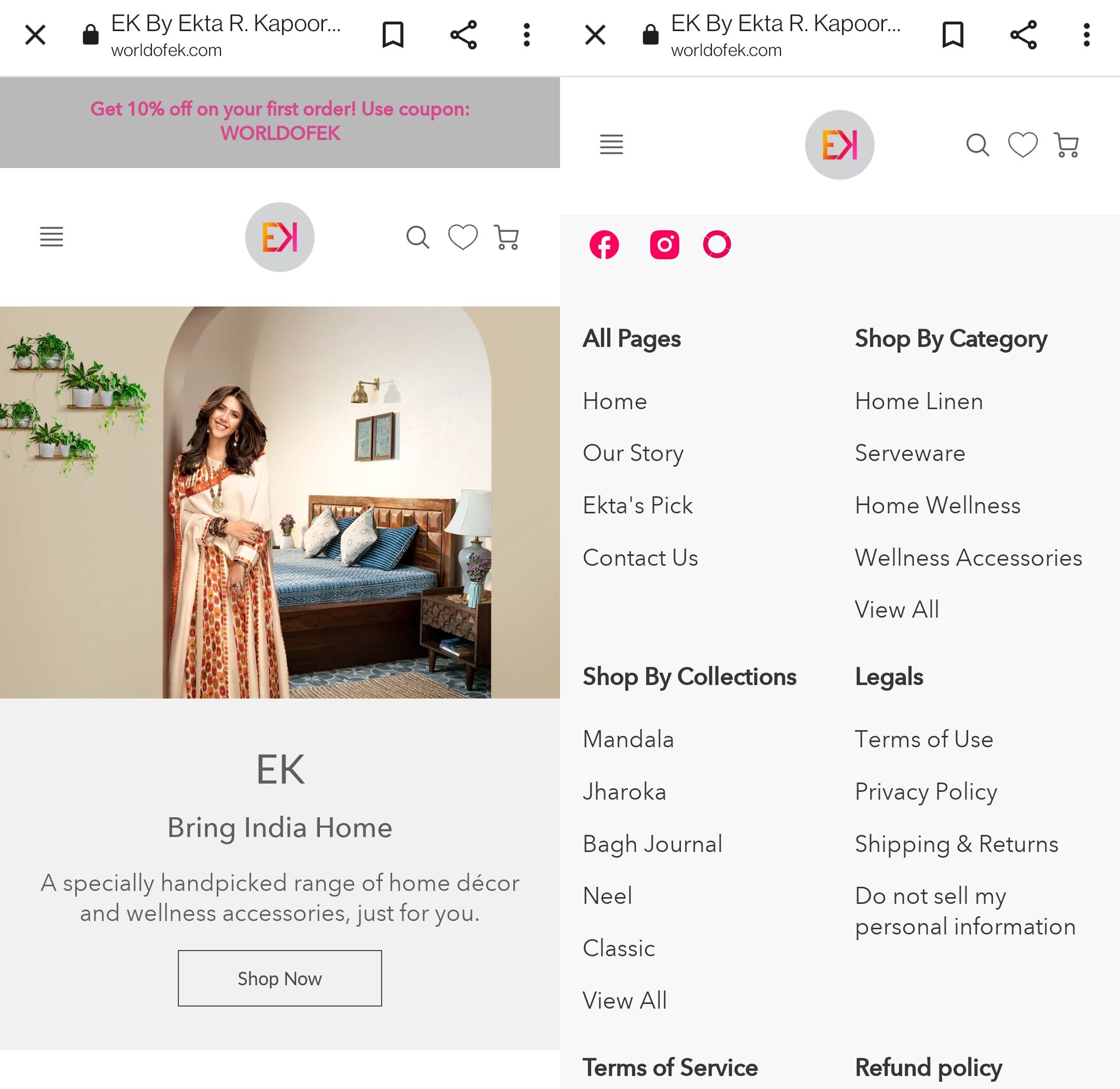
And for a brand to tangibly gain from a Roposo shopfront presence, the real benefit is users’ attention, multiple times a day, organically. That is a question mark right now on Roposo, evidenced also by the fact that it needs to advertise on another media to merely gain that attention.
